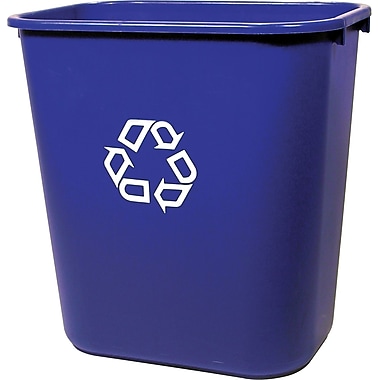
Plant the Giving Seed in Your K–12 Classroom
by Peter W. Andersen, Staples® Contributing Writer
Whether it’s instilling a sense of local charity or global responsibility, or encouraging random and deliberate acts of kindness, educators who teach giving are changing the world — and showing kids how they can have an impact, too.
“Young people who are kind and charitable and give back feel good about themselves,” says Leon Scott Baxter, a Santa Barbara, CA resident now in his 18th year teaching third grade. “Their confidence grows. They see themselves as part of the bigger community, which means they are important. As a result, they do better socially as well as academically.”
That’s why more teachers are creating lessons about the importance of giving. Here are some thoughts from veteran educators on planting the seeds of charity and generosity in the K–12 classroom.
Teach through volunteering
Help kids learn to give back to the community with special events during or outside of school.
Deryn Semmes Winchester, who teaches grades 1–6 at a Montessori school in Phoenix, AZ, keeps her students busy. “In the past,” she says, “my students have picked up trash along the highway, helped the national parks by removing invasive plants, assisted at animal shelters, and visited senior centers.”
Recycling, composting and energy conservation classes also count as “giving back.” At Kinard Core Knowledge Middle School in Fort Collins, CO, students receive instruction on how to be environmentally responsible. “These classes teach students how to give back to our land and preserve things for our future,” says Bill Dern, a veteran math teacher at the school.
Participate in global programs
Teach kids the value of giving beyond their school or community through lessons and service learning trips.
Students can learn the importance of thinking and acting globally by participating in programs like Heifer International or Me to We, which use portions of sales to provide food, materials and other vital items to children and families in need.
For instance, through Staples’ Me to We, students purchase items from a specially designed line of school supplies and make a positive difference for children around the world who face barriers to education and poverty.
Some schools plan international service learning trips — Kinard has sent its students to Costa Rica — to provide direct assistance. Others encourage students to develop independent or group projects. “Last year a student on his own was collecting new socks to send to Africa,” Dern notes.
Create a unit
Baxter started Random Acts of Kindness Month (RAOKM) at his school and uses it as a teaching tool. “Every March I introduce the RAOK Challenge: Can we do one RAOK a day for an entire month? The students write a paragraph about what they expect will happen during April,” he explains, and keep a daily record of the “acts” they do, say or give.
They also participate in some whole class activities. One year, they got the local McDonald's to donate 250 free ice cream certificates. “Some of my students and I passed out these cards to strangers shopping at a local mall. It made the Sunday paper and local news.” In May, Baxter’s students follow up on their experiences by writing and creating PowerPoint-like presentations.
Build character
Teaching giving and charity builds character, says Dern. “One big buy-in at our school is what we call ‘Kinard Character’. It’s about how you act when people are watching, and more importantly, how you act when people are not watching.”
Kinard started a leadership class that allows students to create giving programs. The class is so popular it keeps getting bigger, and admittance is by application only. “There’s no encouragement needed,” Dern says. “We end up having about 150 applicants for about 75 openings.”
All of these approaches have one thing in common: each one was devised and implemented by a teacher. Follow their lead, or create your own approach. However you do it, plant the giving seed in your classroom and watch it grow.
AUTHOR BIO:
Peter W. Andersen is a Seattle-based author. He frequently writes on the subjects of global business, education, the food industry and cloud computing.
Related Articles

According to data from DonorsChoose.org, teachers on average spend about $500 out of their own pockets on supplies... Read more

Elementary school classrooms are filled with all kinds of complex personalities and activities. There are meddling tricksters and... Read more

Lesson plans. Those two words instantly kick up the blood pressure for nearly any teacher. But don’t stress. . Instead, follow this... Read more



